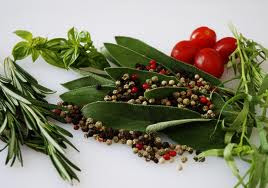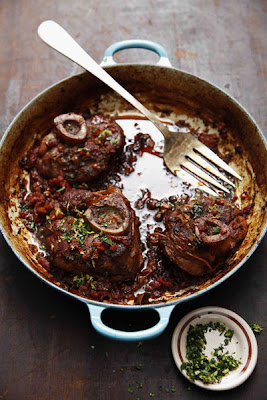My spikenard sends forth its fragrance. A bundle of myrrh is my beloved to me - Song of Solomon 1: 12b - 13a

Welcome to Spikenard and Myrrh!
No matter where we may be in our health management, there is always something that can be done to enhance and contribute to our overall health. ! The desire is to foremost share, learn, make available and to revive the connection of self-responsibility to our overall health. We welcome you to visit the blog from time to time to expand on you already pre-existing knowledge of health management, to read interesting historical information, stories, testimonies of people’ s personal experiences with essential oils and adjunct body therapies as well as to leave your very own footprint of knowledge on the blog.
Sunday, March 31, 2013
Food as tonic
Friday, March 29, 2013
Categories of food in TCM
Categories of food
Tonics:
These are foods and herbs that rebuild the foundational components of the body, i.e. Qi (energy).
For example, if your Chinese Medicine diagnosis is that your yin is relatively less than your yang in your body (yin deficiency) you will want to emphasize foods that tonify (or build) yin.
Qi tonics:
Chia seed, congee, oats, quinoa, rice, beef, chicken, herring, lamb, mussel, shrimp, milk, sunflower seeds, sweet potato, watercress, winter squash.
Blood tonics :
Microalgae, sprouts, leafy greens, chlorophyll-rich foods, seaweed, spirulina, mochi with mugwort, royal jelly, gelatin, carp soup, muscles, oysters, the liver of beef, lamb, or chicken, chicken gizzard.
Foods that tonify yīn:
Grains and legumes: millet, barley, wheat germ, wheat, rice, quinoa, amaranth, seaweeds, micro-algae (especially chlorella and spirulina), tofu, black beans, kidney beans, mung beans (and there sprouts).
Animal: Cow’s or goat’s milk, yogurt, cheese, etc., chicken, egg, clam, abalone, oyster, sardines, duck, beef, pork.
Fruits: persimmon, grapes, blackberry, raspberry, mulberry, banana, watermelon
Vegetables: beets, string beans, kuzu,
– one should cook daily soups, stews, congees (some sort of watery medium).
Foods that tonify yang:
Animal: anchovy, mussel, trout, chicken, beef, lamb,
Fruit: cherry, citrus peal, date,
Grains, seeds, and spices: oats, spelt, quinoa, sunflower seed, sesame seed, walnut, pine nut, chestnut, fennel, dill, anise, caraway, carob pod, cumin, Sweet brown rice (and its products, i.e. moshi)
Vegetables: parsnip, parsley, mustard greens, winter squash, cabbage, kale, onion, leek, chive, garlic, scallion, cooked beans with ginger (e.g. black beans, lentils, aduki beans), hot peppers are warming only in small pitches, otherwise they have a strong cooling effect. This is also true of concentrated sweeteners.
When things get blocked up in the body Chinese Medicine diagnoses, stagnation. Although sometimes there is a deficiency that needs to be strengthened to eliminate the stagnation (above category), most of the time, things just need to be moved, invigorated, or opened up. The below foods promote movement and accomplish this goal. Remember any type of pain in the body is caused from stagnation (or blockage).
Qi movers
Spearmint, rosemary, scallions, garlic and all onion family members, cinnamon bark and branch, clothes, fresh and dried ginger root, black pepper, all hot peppers, cayenne, fennel, anise, dill, mustard greens, horseradish, basil, nutmeg, peppermint, marjoram, elder flowers, white pepper, radish and its leaves, taro, turnip.
Blood movers
Tumeric, scallions, nutmeg, spearmint, chives, garlic, vinegar, basil, peach seed, weak, ginger, chestnuts, rosemary, cayenne, eggplant, white pepper, aduki beans, sweet rice, butter.
Essence (jing) Tonics:
Mussel, lentil, lamb kidney, chicken, microalgae (chlorella, spirulina, wild blue-green), fish, liver, kidney, brain, bone marrow, human placenta, and cereal grasses, milk, ghee, nettles, royal jelly, beef, millet, wheat, black sesame seed, black soybeans, chestnuts, mulberries, raspberries, strawberries, and walnuts.
These foods are best when you are getting a cold or flu. One should, although, pay attention to the thermal nature (hot and cold) of the condition and the foods chosen. If you are getting a cold (but feel hot and have other heat signs from a Chinese medical perspective) then one should emphasize cooler release the exterior foods.
Wind-Cold: oats, pine nuts, shrimp, ginger, fennel, basil, anise
Wind-Heat: celery, kuzu, mulberry, strawberry, peppermint
Neutral: black soybeans, black sesame seed, fresh flax oil
Internal Wind: celery, basil, sage, fennel, dried or fresh ginger, anise, oats, black soybeans, black sesame seed, kuzu, pine nut, coconut, fresh cold-pressed flax oil, shrimp.
Foods that eliminate damp
lettuce, celery, turnip, rye, amaranth, aduki beans, wild blue-green micro-algae, asparagus, white pepper, alfalfa, pumpkin, vinegar, papaya.
Foods that eliminate dryness
soy (tofu, tempeh, soy milk, miso), spinach, asparagus, millet, barley, salt, seaweed, white fungus, apple, tangerine, pine nut, persimmon, peanuts, pear, honey, barley malt, sugar cane, whole sugar, oyster, clam, mussel, pork, and pork kidney.
Foods that eliminate summer heat
lemons, apple, watermelon, cantaloupe, papaya, pineapple, musk-melon, mung beans (in soup), summer squash, zucchini, cucumber, radish juice, bitter melon soup, watermelon juice.
Every condition can be divided into a thermal temperature of hot or cold.
Cooling Foods which reduce heat signs:
Apple, banana, pear, persimmon, cantaloupe, watermelon, tomato, all citrus, lettuce, radish, cucumber, celery, button mushrooms, asparagus, Swiss chard, eggplant, spinach, summer squash, Chinese cabbage, bock choy, broccoli, cauliflower, sweet corn, zucchini, soy milk, soy sprouts, tofu, tempeh, mung beans and their sprouts, alfalfa sprouts, millet, barley, wheat and its products, amaranth, kelp and all seaweed, spirulina, wild blue-green, oyster-shell calcium, wheat and barley grass, kudzu, yogurt, crab, clam.
Warming foods which warm cold signs:
Ginger root, black beans, aduki beans, lentils, cinnamon bark and twig, cloves, basil, rosemary, oats, spelt, quinoa, sunflower seed, sesame seed, walnuts, pine nuts, chestnuts, fennel, dill, anise, carraway, carob pod, cumin, sweet brown rice, parsnip, parsley, mustard greens, winter squash, cabbage, kale, onion, leek, chives, garlic, scallions, cherry, citrus deal, date, hot peppers, butter, and anchovy, mussel, trout, chicken, beef, lamb.
Foods categorized by flavors
Warming acrid: spearmint, rosemary, scallion, garlic, all onion members, cinnamon bark and branch, cloves, fresh and dried ginger root, black pepper, hot peppers, cayenne, fennel, anise, dill, mustard greens, horseradish, basil, nutmeg
Cooling acrid:
Neutral acrid:
Salty:
Sour:
Sour-bitter: vinegar
Sour-acrid: leek
Sour-sweet:
Bitter:
Bitter-acrid:
Bitter-sweet:
Bitter-sour:
Sweet:
Wednesday, March 27, 2013
“THE LION OF CASTOR OIL ALONE CAN KILL THE MADDENED ELEPHANT Of VATA AS IT STAMPEDES THROUGH THE BODY
Bowel Cleansing
Monday, March 25, 2013
Warming Cold
Asafoetida
Saturday, March 23, 2013
Essential Oils: Endocrine Support
Caution:
(Citrus bergamia)
Thursday, March 21, 2013
Essential Oils: Endocrine Support
Possible skin sensitivity.
(Cananga odorata)
Tuesday, March 19, 2013
Essential Oils: Endocrine Support
SclarEssence™ supports normal glandular functions.*
It combines the soothing effects of peppermint with the balancing power of fennel and clary sage along with the gentle, calming action of sage lavender for an extraordinary dietary supplement.
Put 1 - 2 drops in a capsule.
Ingest 1 capsule daily as needed.
Possible skin sensitivity.
If pregnant or under a doctor's care, consult your physician.
Ingredients:
Clary sage (Salvia sclarea)
peppermint (Mentha piperita)
sage lavender (Salvia lavandulifolia)
fennel (Foeniculum vulgare)
Sunday, March 17, 2013
Essential Oils: Endocrine Support
Possible skin sensitivity.
Friday, March 15, 2013
Endocrine System Support for the Emotions
Wednesday, March 13, 2013
Endorine Support for Women
http://www.blogtalkradio.com/drleanne/blog/2010/07/27/troubleshooting-with-progessence-plus#.USGJDcvTGmU.email
Monday, March 11, 2013
Healthy Endocrine Support
Saturday, March 9, 2013
Pet care with essential oils
Based on her experience as a veterinarian, Dr. Hess suggests these Young Living essential oil blends to keep pets feeling their best.
•Thieves® essential oil blend:
•Melrose™ essential oil blend:
abrasions, and lacerations if Thieves blend can't be tolerated.
•R.C.™ essential oil blend:
(It can be paired with Raven blend for added support.)
•Raven™ essential oil blend:
•Relieve It™ essential oil blend:
** if you are new to the oils, please keep in mind that Thieves blend is "hot" and that 1 drop goes a long way.
do dilute with a mixing oil.**
Thursday, March 7, 2013
Interpretation of Facial Zoning
Forehead
In descending order down the forehead: Bladder, Large Intestine, Small Intestine.
Between the Eyes
Under the Eyes
Dry, flaky or red skin in the creases above the eye shows liver stress.
The Nose
The Cheeks
The Mouth
The Chin
The Jaw and under the jaw line
Tuesday, March 5, 2013
TCM and Facial Zoning
From Greek medicine to Ayurveda and Traditional Chinese Medicine (TCM), facial analysis has been used as an indication of the health of the organs or to provide useful clues as to the systems involved in any health issue.
In particular TCM has a detailed map of the face including lines, organ zones and color indications. Using TCM facial analysis principles with relation to skin conditions, the map and colors of the face can help indicate the underlying causes and support the choice of treatment.
Skin conditions that affect the face such as eczema, psoriasis, rosacea and acne don’t usually affect the entire surface of the face.
The affected areas are often confined to particular areas or zones so just by looking at your face you can find out more about the underlying cause of any skin condition.
This technique is not confined to skin conditions.
It can also be used as a tool to assess wellbeing or to improve skin tone in general.
Sunday, March 3, 2013
Methods of cooking according to TCM
-->

























































